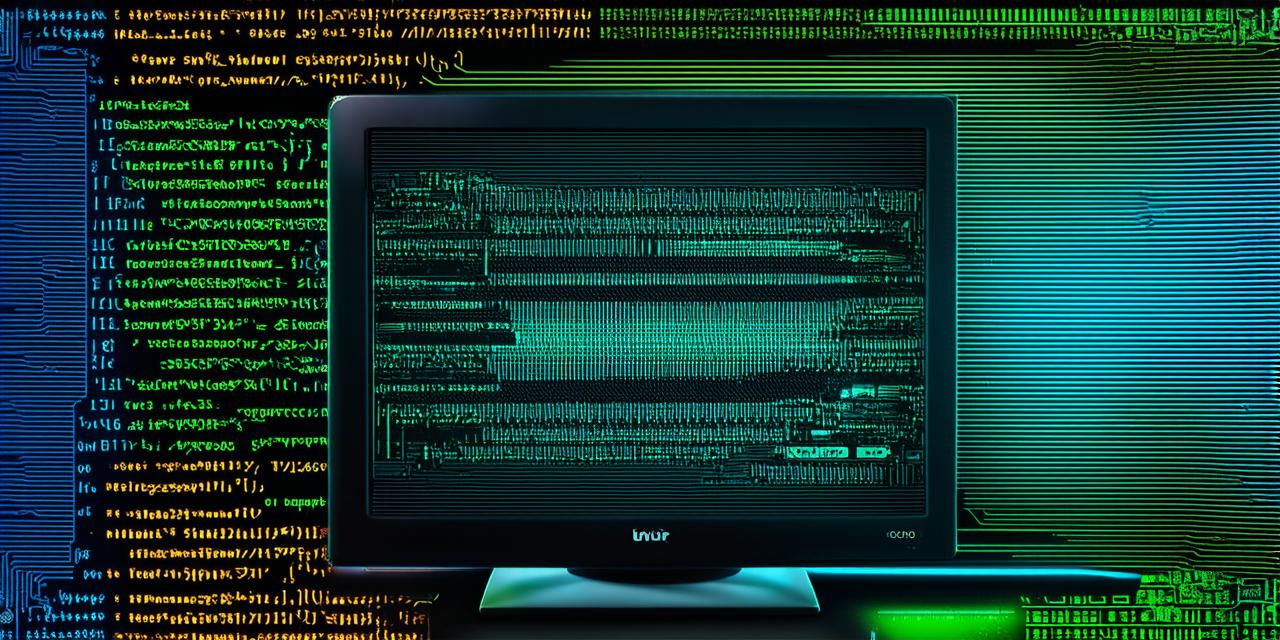Introduction
As an Android Studio developer, you are constantly working with various tools and terminologies. One of the most commonly used terms is "terminal," which refers to a computer program that allows users to interact with the command line interface (CLI) of their operating system. In this guide, we will explore what "terminal" means in Android Studio and how it can be used by developers to improve their productivity and efficiency.
What is Terminal?

In the context of Android Studio, a terminal refers to a window or tab that displays the output of commands entered into the CLI of the operating system. The terminal emulates the behavior of a real terminal and allows users to interact with the command line in a text-based environment. When you run a command in the terminal, the output is displayed in real-time on the screen, making it easy to monitor and troubleshoot issues as they arise.
Terminal vs Command Prompt
While the terms "terminal" and "command prompt" are often used interchangeably, there is a slight difference between them. The terminal refers specifically to the CLI of an operating system, while the command prompt is a specific implementation of the terminal in Microsoft Windows. In Android Studio, you can use either the terminal or the command prompt depending on your preferences and operating system settings.
Using Terminal in Android Studio
The terminal window in Android Studio can be used for various tasks, including building projects, running commands, and debugging applications. Here are some of the most common ways to use the terminal in Android Studio:
- Building Projects
The terminal is an excellent tool for building projects in Android Studio. You can use the command line to specify the build settings, dependencies, and configurations for your project. For example, you can run the following command to clean the build cache and rebuild your project:
bashflutter clean
flutter pub get
flutter run
2. Running Commands
You can also use the terminal to run commands directly from within Android Studio. For example, you can use the adb command to connect your device to your computer and perform various tasks such as installing apps, pushing files, and running commands on the device. Here’s an example of how to use the adb command:
css
adb devices
adb push file.txt /path/to/device/file.txt
adb shell pm install -t com.example.app
3. Debugging Applications
The terminal is an excellent tool for debugging applications in Android Studio. You can use the dart run command to start your Dart application and attach it to a running Android emulator or physical device. You can then use the dart debugger command to attach a debugger to the application, set breakpoints, and step through the code.
css
flutter run
–debugger
Terminal vs Integrated Development Environment (IDE)
While both the terminal and integrated development environment (IDE) are important tools for Android Studio developers, they serve different purposes. The IDE provides a graphical interface for designing, coding, and testing applications, while the terminal provides a more powerful and flexible command-line interface for managing projects and debugging applications.
Using Terminal vs IDE: Which is Better?
Both the terminal and the IDE have their own advantages and disadvantages, and the choice between them ultimately depends on your personal preference and workflow. Some developers prefer to use the IDE because it provides a more intuitive and user-friendly interface for designing and coding applications. Others prefer to use the terminal because it provides more flexibility and power for managing projects and debugging applications.
Case Studies: Real-Life Examples of
Using Terminal in Android Studio
Let’s take a look at some real-life examples of how developers are using the terminal in Android Studio to improve their productivity and efficiency.
1. Building and Debugging Applications
In this example, a developer uses the terminal to build and debug an Android application. They start by running the <h2>flutter clean</h2> command to clear the build cache and rebuild their project:
bash
flutter clean
flutter pub get
flutter run
Next, they attach a debugger to their application using the dart debugger command:
css
dart run –debugger
Finally, they use the terminal to run commands on their device and interact with the application using the adb command:
css
adb shell pm install -t com.example.app
adb push file.txt /path/to/device/file.txt
adb shell dumpsys app com.example.app
2. Managing Projects
In this example, a developer uses the terminal to manage their Android project. They use the <h2>flutter pub get</h2> command to download dependencies and update the build cache:
css
flutter pub get
They also use the <h2>flutter pub pubspec.yaml</h2> command to generate a pubspec.lock file that specifies the exact versions of dependencies used in their project:
css
flutter pub pubspec.yaml
Finally, they use the <h2>flutter clean</h2> command to clear the build cache and rebuild their project:
bash
flutter clean
Conclusion
In conclusion, understanding "terminal" in Android Studio is crucial for developers looking to improve their productivity and efficiency. Whether you are building projects, running commands, or debugging applications, the terminal provides a powerful and flexible tool for managing your workflow in Android Studio. So, next time you need to run a command or manage a project, don’t forget to open up the terminal window and give it a try!
FAQs
1. What is the difference between terminal and IDE?
Terminal refers specifically to the command line interface of an operating system, while the integrated development environment (IDE) provides
